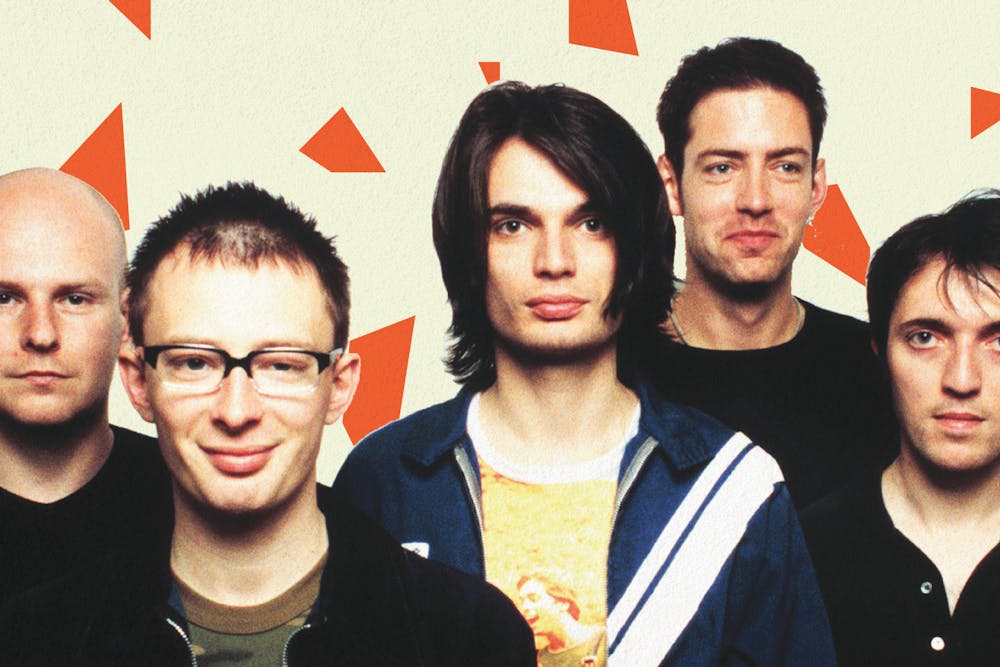Radiohead is one of the largest rock bands of the 1990s and the 2000s. Their trajectory from their decent debut to their artistic peak at the turn of the century was unprecedented and thrilling. The band’s journey can now be streamed on Bandcamp, as they recently released their discography on the platform. The move came just weeks before they planned to drop a reissue of two albums, Kid A and Amnesiac, that adds unreleased B–sides from the era.
Radiohead’s opening to Bandcamp calls back to the early 2010s, when the band’s frontman Thom Yorke became a leading voice against streaming services. In 2013, he famously called Spotify “the last desperate fart of a dying corpse” and condemned the service for driving a wedge into the artist–listener connection. For nearly a decade now, Yorke has been protesting Spotify and its low artist wages. Despite this long amount of time, Spotify’s payments remain an issue to this day.
Radiohead’s emphasis on the connection between artists and listeners was clear in 2007, as the band released their album In Rainbows with a pay–what–you–want system. Before the dominance of streaming services, this was a radical idea that polarized the music press. Yorke compared it to Spotify in 2013, calling the company “gatekeepers” between an artist and their fans.
The band’s battle with Spotify seemed to reach somewhat of an end in 2016. The band brought that year’s album, A Moon Shaped Pool, to Spotify weeks after its release. The move ended the album’s exclusivity on Apple Music, which has a better per–stream pay rate. However, this didn’t end Yorke’s complaints, as he voiced concerns on Twitter over Spotify’s low payment for artists the following year. In 2017, it came to light that 70% of Spotify’s streaming payouts were going to the rights holders of the music, meaning executives and labels as opposed to the artists. It was clear that artists needed a greater share of the money coming from their art.
Around this time in 2016, musicians proposed an idea to Spotify. Since premium users’ streams paid more money than free users’ streams, why not make an album exclusive to premium users? It could encourage free users to subscribe to Spotify Premium and therefore make more money for artists. Spotify was given the idea in 2014 when Taylor Swift asked for its use on the album 1989. Radiohead’s label was even discussing the idea with Spotify for A Moon Shaped Pool before spokesman Jonathan Prince stated that the service wouldn’t have been able to prepare that in time.
Spotify’s open talks with musicians about this “album windowing” scheme ran contrary to the company’s foundation on free access to music. Should there be music that free listeners can’t access? In the face of discussions with Swift and Radiohead, Spotify continued to say no. They never backpedaled on that foundation, even when some of the hottest artists were asking them to do so. When they turned windowing down for 1989, Swift responded by removing her entire back catalog from Spotify; she would bring it back three years later for reasons unrelated to the initial spat.
Today, after years of debate, Spotify’s payments to artists are roughly in the same place as before. Musicians are still demanding a raise in artists’ earnings, and Radiohead guitarist Ed O’Brien even consulted the U.K. government last year during their inquiry on streaming economics. The report of the inquiry saw MPs asking for a “complete reset” of the system that could give artists a fairer share.
In March of this year, Spotify launched “Loud and Clear,” an initiative meant to clarify the economics of streaming and guarantee an improvement in the future. While the site offers good explanation as to why Spotify’s general rate is lower than competing streaming services like Apple Music or Tidal, it notably lacked any substantive moves which the service could use to improve on that front. Although Swift and Radiohead have brought their music back to Spotify, they should remain vigilant about these changes. Transparency is a step in the right direction, but actual justice for artists should come next, and Spotify should talk to them about what they should work on moving forward.
Radiohead even came up with an alternative last year, launching the Radiohead Public Library. On the website, visitors can purchase and stream the band’s catalog, view their videos, and even buy their merch. It’s a return to their In Rainbows experiment, but this time its context gives it a greater meaning: if these streaming services want to cut their revenue short or give it to the wrong people, then the band can always sell their output on their own terms. It’s a bold claim, and until Spotify changes course, it’s a method that other artists could and should try.







